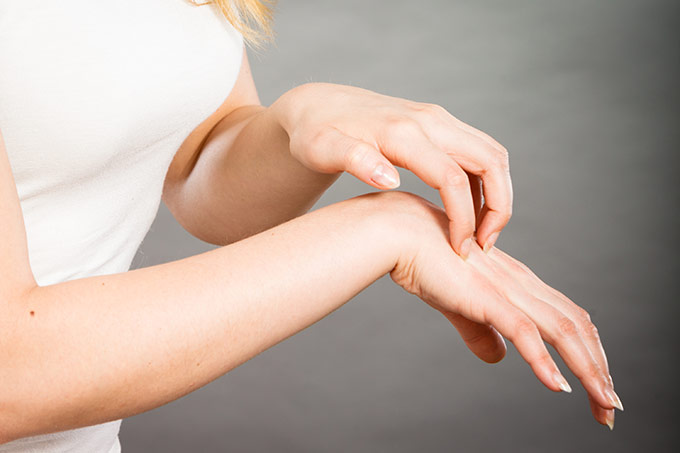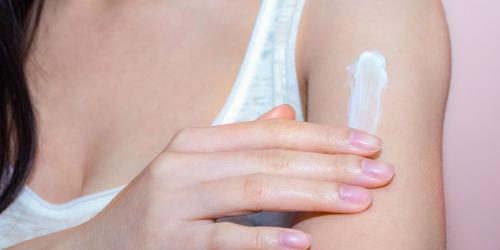A common form of eczema, dyshidrosis affects the feet and hands. This chronic and periodic condition is painful and can be especially disabling. Update on the causes, treatments and prevention of dyshidrosis with dermatologist Nina Roos 1 .
Dyshidrosis: appearance and symptoms
It is a form of eczema that affects the palms of the hands or the soles of the feet. It is manifested by small vesicles that form at these places because the skin is very hard. These vesicles contain water and burst, resulting in the formation of crusts.
"It is manifested by itching, more or less strong and in some cases, we observe the appearance of cracks and crusts," says Nina Roos. Problem: the diagnosis is often complicated. In fact, the person affected does not necessarily have eczema elsewhere and dyshidrosis can be confused with mycosis, especially on the feet, because the symptoms are the same.
Sweating, stress, excess washing ... Multiple causes
The causes of dyshidrosis are not always obvious, says the dermatologist. Dyshidrosis is often observed in summer when it is hot. "This condition is favored by the sweating of the skin, but also stress or fatigue.Inversely, some people will have outbreaks during periods of extreme cold ...".
Another common cause of dyshidrosis - and somewhat surprising! - an excess of washing, or cosmetic substances: "all that foam weakens the skin", specifies the dermatologist. "Sometimes we maintain the problem by disinfecting."
On the other hand, dyshidrosis is by no means contagious. It can, however, come from allergic terrain and a tendency to atopic skin. Women are more exposed because they tend to wash their hands more often and use more cosmetics.
 © Ametlanda / iStockphoto.com
© Ametlanda / iStockphoto.com
What solutions against dyshidrosis?
Initially, treatments are intended to relieve itching. Thus, one can be prescribed a corticosteroid cream or a healing cream.
Nina Roos reassures: "the application of corticosteroids is done on a surface so small that there is no risk of passage in the blood". In addition, we can advise those who can to expose themselves a little sun, which allows to dry. The most extreme cases may be treated with immunosuppressive agents, but each case is studied in its specificity. Nina Roos insists: do not wait before consulting, to receive appropriate treatment as soon as possible.
The professional also warns against natural remedies, which can sometimes be allergenic. Above all, you do not apply essential oil directly to a wound! And we are reassured, the dyshidrosis is not automatically chronic, we can very well have a push once in his life and never see this affection come back.
Prevent outbreaks
Once the dyshidrosis is identified, it is possible to anticipate the outbreaks. The tips of Nina Roos are as follows: we avoid soapy soaps and apply its treatment from the beginning of the push.
You can also apply a barrier cream - available in pharmacy and drugstore - to protect against aggression, especially if you already have small wounds. "This type of cream is very practical for women who are forced to wash their hands very often (nursery assistants, restaurant chefs, nurses ...)", explains the specialist. We can renew the application of cream every three washes or after a swim of 1:30.
For the feet, cotton socks are worn for ventilation - since dyshidrosis is aggravated by perspiration - and a second pair of socks are brought for change during the day.
1. Author of A skin in great shape , Solar Editions, 2016. To find on www.monsitebeaute.com




